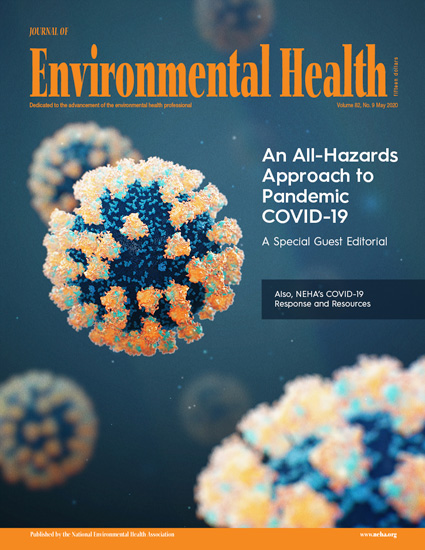有机氯杀虫剂与美国军人罹患甲状腺乳头状癌的风险:一项巢式病例对照研究
IF 5.3
2区 环境科学与生态学
Q1 ENVIRONMENTAL SCIENCES
引用次数: 0
摘要
有机氯杀虫剂(OCP)暴露对人类甲状腺乳头状癌(PTC)发病的影响尚不十分清楚。我们利用美国国防部血清库(DoDSR)队列中 2000 年至 2013 年期间的数据开展了一项嵌套病例对照研究,以评估单个 OCP 血清浓度与 PTC 风险之间的关联。这项研究包括 742 例经组织学确诊的 PTC 病例(女性 341 例,男性 401 例)和 742 例单独匹配的对照组,其诊断前血清样本选自 DoDSR。利用条件逻辑回归评估了经典 PTC 和滤泡型 PTC 的七种 OCPs 脂质校正血清浓度类别与 PTC 风险之间的关系,并根据体重指数类别和军种进行了调整,计算出了几率比 (OR) 和 95% 置信区间 (CI)。研究还考察了性别、出生队列和种族对效果的影响。没有证据表明大多数 OCPs 与 PTC 之间存在关联,无论是总体关联还是按组织学亚型分层关联。总体而言,没有证据表明六氯苯(HCB)与 PTC 存在关联,但按组织学亚型分层,六氯苯与经典 PTC 风险显著增加有关(高于检测限 (LOD) 的第三三元组与低于检测限的第三三元组相比,OR = 1.5)。Organochlorine pesticides and risk of papillary thyroid cancer in U.S. military personnel: a nested case-control study
The effects of organochlorine pesticide (OCP) exposure on the development of human papillary thyroid cancer (PTC) are not well understood. A nested case-control study was conducted with data from the U.S. Department of Defense Serum Repository (DoDSR) cohort between 2000 and 2013 to assess associations of individual OCPs serum concentrations with PTC risk. This study included 742 histologically confirmed PTC cases (341 females, 401 males) and 742 individually-matched controls with pre-diagnostic serum samples selected from the DoDSR. Associations between categories of lipid-corrected serum concentrations of seven OCPs and PTC risk were evaluated for classical PTC and follicular PTC using conditional logistic regression, adjusted for body mass index category and military branch to compute odds ratios (OR) and 95% confidence intervals (CIs). Effect modification by sex, birth cohort, and race was examined. There was no evidence of associations between most of the OCPs and PTC, overall or stratified by histological subtype. Overall, there was no evidence of an association between hexachlorobenzene (HCB) and PTC, but stratified by histological subtype HCB was associated with significantly increased risk of classical PTC (third tertile above the limit of detection (LOD) vs.
求助全文
通过发布文献求助,成功后即可免费获取论文全文。
去求助
来源期刊

Environmental Health
环境科学-公共卫生、环境卫生与职业卫生
CiteScore
10.10
自引率
1.70%
发文量
115
审稿时长
3.0 months
期刊介绍:
Environmental Health publishes manuscripts on all aspects of environmental and occupational medicine and related studies in toxicology and epidemiology.
Environmental Health is aimed at scientists and practitioners in all areas of environmental science where human health and well-being are involved, either directly or indirectly. Environmental Health is a public health journal serving the public health community and scientists working on matters of public health interest and importance pertaining to the environment.
 求助内容:
求助内容: 应助结果提醒方式:
应助结果提醒方式:


